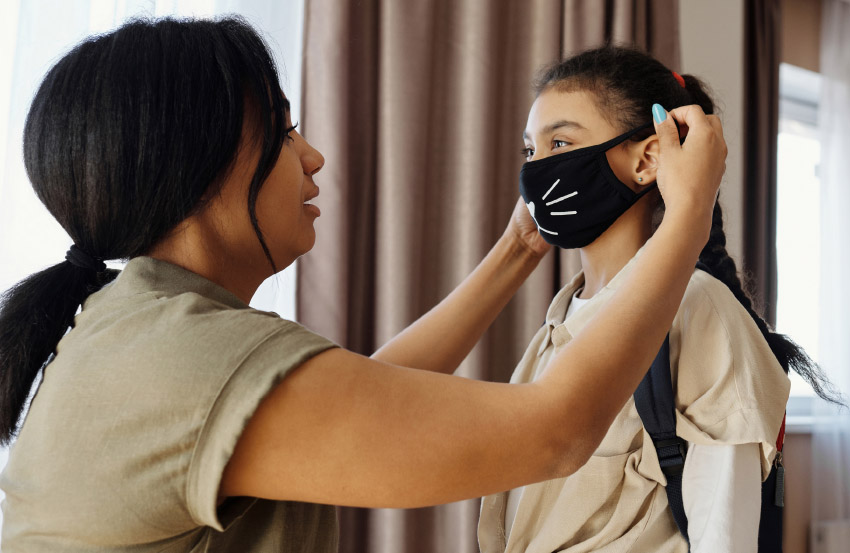
Life during the COVID-19 pandemic is difficult for parents and children alike. The return to school is an important and hopefully welcome step, but you and your children likely have many questions. Here’s the latest information on what to expect and how you can support your young student.
When and how will schools be reopened?
We are slowly seeing an increasing number of children return to the classroom. More than 1 billion students are still out of school due to nationwide school closures, but more than 70 countries have announced plans to reopen schools and hundreds of millions of students have returned in recent weeks. [As of early June 2020]
Given the difficulty of the situation and variation across the globe, countries are in different stages regarding how and when they plan to reopen schools. These decisions will usually be made by national or state governments, often in discussion with local authorities. They will have to consider public health, the benefits and risks for education and other factors. The best interest of every child should be at the centre of these decisions, using the best available evidence, but exactly how this will look will vary from school to school.
Is it safe for my child to go back to school?
Schools should only be reopened when it is safe for students. Going back to school will likely look a little different from what you and your child were used to before. It’s possible that schools may reopen for a period of time and then a decision may be made to close them again temporarily, depending on the local context. Because of the evolving situation, authorities will need to be flexible and ready to adapt to ensure the safety of every child.
Even if leaders in your area have not yet decided to reopen schools, it’s crucial that they begin detailed planning now, to help ensure students, teachers and other staff are safe when they return, and communities are confident in sending their students back to school.
What precautions should the school be taking to prevent COVID-19 virus from spreading?
School reopenings should be consistent with each country’s overall COVID-19 health response to protect students, staff, teachers and their families.
Some of the practical measures that schools can take include:
• Staggering the start and close of the school day
• Staggering mealtimes
• Moving classes to temporary spaces or outdoors
• Holding school in shifts, to reduce class size
Water and hygiene facilities will be a crucial part of schools reopening safely. Administrators should look at opportunities to improve hygiene measures, including handwashing, respiratory etiquette (i.e. coughing and sneezing into the elbow), physical distancing measures, cleaning procedures for facilities and safe food preparation practices. Administrative staff and teachers should also be trained on physical distancing and school hygiene practices.
What questions should I be asking my child’s teacher or school administrator?
During such a worrying and disruptive time, it’s natural to have a lot of questions. Some helpful ones you may want to ask include:
• What steps has the school taken to help ensure the safety of students?
• How will the school support the mental health of students and combat any stigma against people who have been sick?
• How will the school refer children who may need referrals for specialized support?
• Will any of the school’s safeguarding and bullying policies change once schools start to re-open?
• How can I support school safety efforts, including through parent-teacher committees or other networks?
What should I do if my child has fallen behind?
Students around the world have shown just how much they want to keep learning. They have persisted with their lessons under difficult circumstances, with the support of their dedicated teachers and parents.
But many children will need extra support to catch up on their learning when schools reopen.
Many schools are making plans for catch-up lessons to help bring students back up to speed. This might include starting the year with refresher or remedial courses, after-school programmes or supplemental assignments to be done at home. Given the possibility that many schools may not open full time or for all grades, schools may implement ‘blended learning’ models, a mix of classroom instruction and remote education (self-study through take home exercises, radio, TV or online learning).
Give extra support to your child at home by creating a routine around school and schoolwork. This can help if they are feeling restless and having trouble focusing.
You may want to contact your child’s teacher or school to ask questions and stay informed. Be sure to let them know if your child is facing specific challenges, like grief over a family loss or heightened anxiety due to the pandemic.
What should I do if my child is struggling to get back into “school mode?”
Remember that your child will be dealing with the stress of the ongoing crisis differently from you. Create a supportive and nurturing environment and respond positively to questions and expressions of their feelings. Show support and let your child know that it’s not only okay, but normal, to feel frustrated or anxious at times like this.
Help your children to stick to their routines and make learning playful by incorporating it into everyday activities like cooking, family reading time or games. Another option could be joining a parent or community group to connect with other parents who are going through the same experience to share tips and get support.










